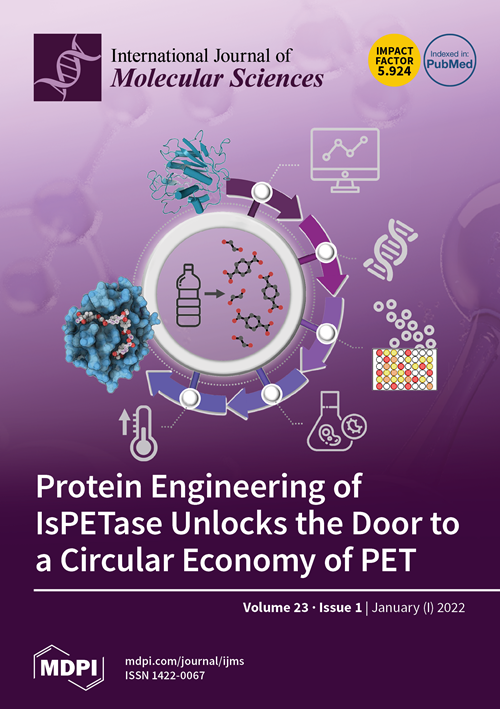Comparative Evaluation of Adipokine Metrics for the Diagnosis of Gestational Diabetes Mellitus
IF 4.9
2区 生物学
Q1 BIOCHEMISTRY & MOLECULAR BIOLOGY
引用次数: 0
Abstract
Gestational diabetes mellitus (GDM) is one of the most common medical disorders in pregnancy. Adipokines, predominantly secreted by adipose tissue, are involved in numerous metabolic processes. The exact role of adipokines in the pathogenesis of GDM is still not well known, and numerous adipokines have been analysed throughout pregnancy and proposed as biomarkers of GDM. This study aimed to evaluate serum adiponectin, chemerin, lipocalin and apelin levels in GDM and non-GDM women, to assess them as clinically useful biomarkers of the occurrence of GDM and to demonstrate the correlation between the levels of the above adipokines in the blood serum and the increased risk of the development of GDM. The role of these adipokines in the pathogenesis of GDM was also analysed. The statistically significant differences between the levels of adiponectin (7234.6 vs. 9837.5 ng/mL, p < 0.0001), chemerin (264.0 vs. 206.7 ng/mL, p < 0.0001) and lipocalin (39.5 vs. 19.4 ng/mL, p < 0.0001) were observed between pregnant women with GDM and healthy ones. The diagnostic usefulness of the tested adipokines in detecting GDM was also assessed. The research results confirm the hypothesis on the significance of adiponectin, chemerin, lipocalin and apelin in the pathophysiological mechanisms of GDM. We speculate that these adipokines could potentially be established as novel biomarkers for the prediction and early diagnosis of GDM.用于诊断妊娠糖尿病的脂肪因子指标的比较评估
妊娠糖尿病(GDM)是妊娠期最常见的疾病之一。主要由脂肪组织分泌的脂肪因子参与了许多新陈代谢过程。脂肪因子在 GDM 发病机制中的确切作用尚不十分清楚,许多脂肪因子已在整个孕期被分析,并被提议作为 GDM 的生物标志物。本研究旨在评估 GDM 和非 GDM 妇女的血清脂肪连通素、螯合素、脂钙素和凋亡素的水平,将其作为 GDM 发生的临床有用的生物标志物,并证明上述脂肪因子在血清中的水平与 GDM 发生风险增加之间的相关性。此外,还分析了这些脂肪因子在 GDM 发病机制中的作用。在 GDM 孕妇和健康孕妇之间,观察到脂肪连通素(7234.6 对 9837.5 纳克/毫升,p < 0.0001)、螯合素(264.0 对 206.7 纳克/毫升,p < 0.0001)和脂钙素(39.5 对 19.4 纳克/毫升,p < 0.0001)的水平存在明显的统计学差异。研究还评估了测试的脂肪因子在检测 GDM 方面的诊断作用。研究结果证实了关于脂肪连素、螯合素、脂钙素和凋亡素在 GDM 病理生理机制中的重要性的假设。我们推测,这些脂肪因子有可能成为预测和早期诊断 GDM 的新型生物标志物。
本文章由计算机程序翻译,如有差异,请以英文原文为准。
求助全文
约1分钟内获得全文
求助全文
来源期刊

International Journal of Molecular Sciences
Chemistry-Organic Chemistry
CiteScore
8.10
自引率
10.70%
发文量
13472
审稿时长
17.49 days
期刊介绍:
The International Journal of Molecular Sciences (ISSN 1422-0067) provides an advanced forum for chemistry, molecular physics (chemical physics and physical chemistry) and molecular biology. It publishes research articles, reviews, communications and short notes. Our aim is to encourage scientists to publish their theoretical and experimental results in as much detail as possible. Therefore, there is no restriction on the length of the papers or the number of electronics supplementary files. For articles with computational results, the full experimental details must be provided so that the results can be reproduced. Electronic files regarding the full details of the calculation and experimental procedure, if unable to be published in a normal way, can be deposited as supplementary material (including animated pictures, videos, interactive Excel sheets, software executables and others).
 求助内容:
求助内容: 应助结果提醒方式:
应助结果提醒方式:


